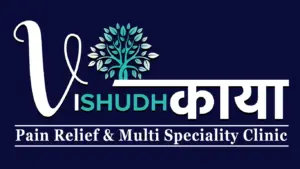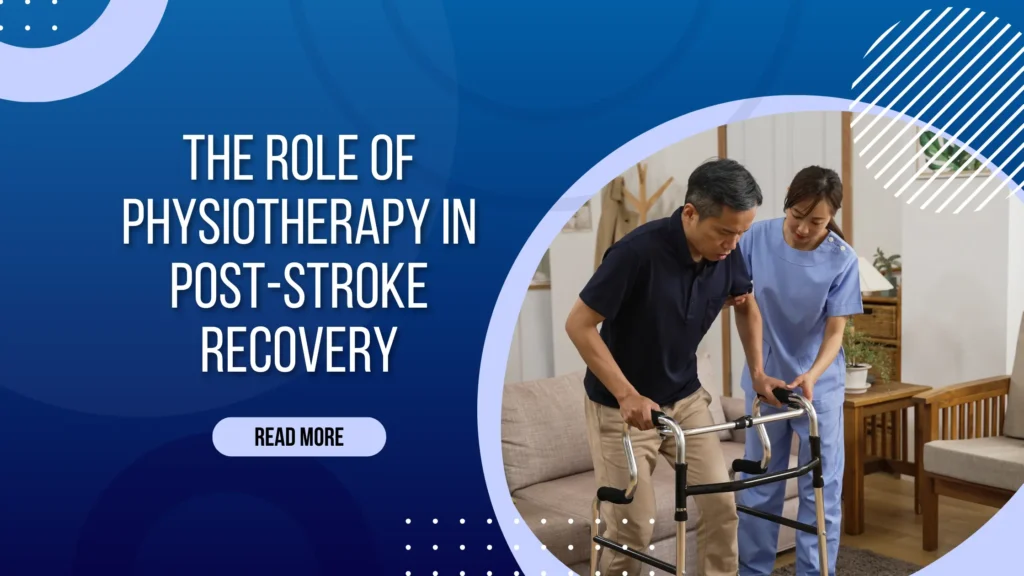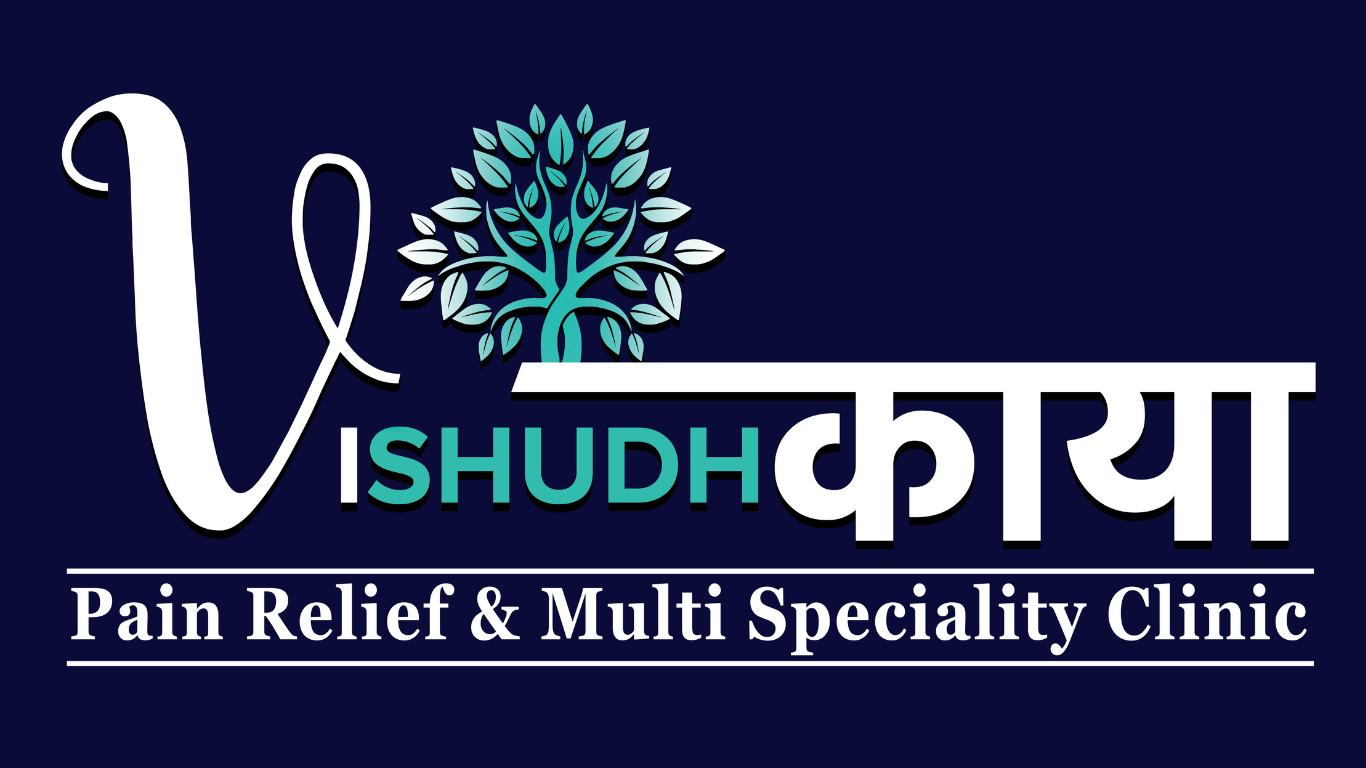Understanding Stroke and Its Impact
What is a Stroke? (Types: Ischemic, Hemorrhagic, TIA)
A stroke is a serious medical condition that occurs when the brain’s blood supply is disrupted, depriving brain cells of oxygen and nutrients. This can lead to brain damage, affecting movement, speech, and cognitive functions. The impact of a stroke depends on its type and the region of the brain affected.
Types of Stroke:
- Ischemic Stroke – The most common type, caused by a blood clot or plaque buildup blocking an artery supplying blood to the brain, preventing oxygen from reaching brain cells.
- Hemorrhagic Stroke – Results from a ruptured blood vessel in the brain, leading to internal bleeding. High blood pressure and aneurysms are common causes.
- Transient Ischemic Attack (TIA) – Mini-Stroke – A temporary blockage of blood flow to the brain, resolving without lasting damage but serving as a warning sign of a potential major stroke.
How Does a Stroke Affect Movement, Coordination, and Daily Activities?
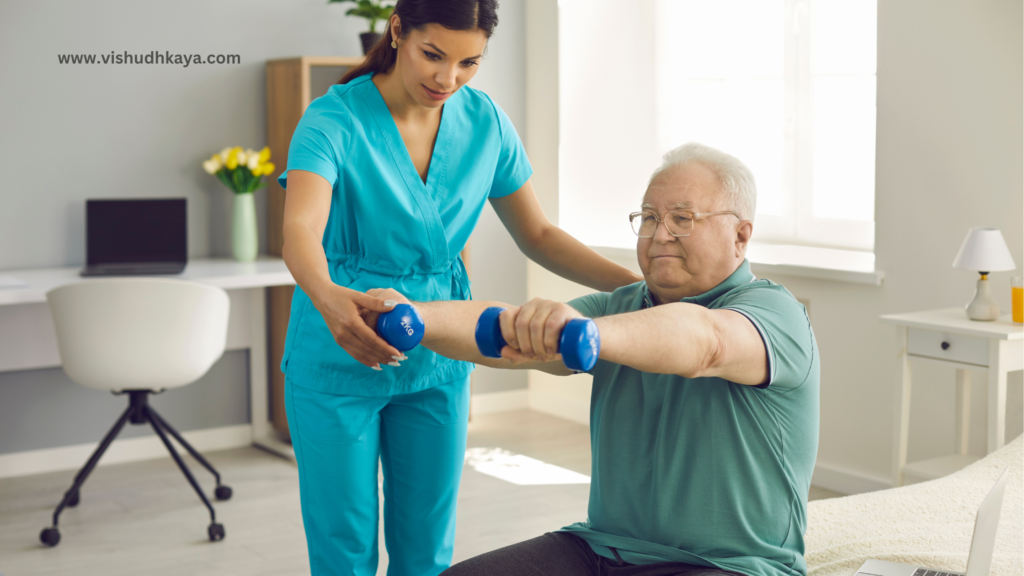
A stroke can significantly impact a person’s ability to move, maintain balance, and perform everyday tasks.
Effects on Movement and Muscle Strength:
- Hemiparesis (Weakness on One Side) – Stroke often leads to reduced strength, making walking and lifting objects difficult.
- Hemiplegia (Paralysis on One Side) – In severe cases, complete loss of movement occurs.
- Muscle Stiffness and Spasticity – Increased muscle tightness can restrict movement and cause pain.
Impact on Coordination and Balance:
- Difficulty with Fine Motor Skills – Tasks like writing or buttoning a shirt become challenging.
- Balance and Stability Issues – Standing or walking may become difficult, increasing fall risk.
- Apraxia (Motor Planning Issues) – Difficulty in executing learned movements despite functional muscles.
Difficulties in Daily Life:
- Struggles with Self-Care – Dressing, bathing, and eating may become challenging.
- Speech and Swallowing Issues – Communication and swallowing functions may be impaired.
- Increased Fatigue – Daily tasks require extra effort and time.
The Importance of Early Rehabilitation in Stroke Recovery
Early stroke rehabilitation plays a key role in restoring movement, strength, and independence, leveraging the brain’s ability to heal and adapt (neuroplasticity after stroke).
Benefits of Early Rehabilitation:
- Encourages Brain Adaptation – Rehabilitation strengthens new neural pathways to improve function.
- Reduces Complications – Prevents muscle stiffness, pressure sores, and blood clots.
- Enhances Daily Activity Independence – Supports relearning essential skills such as walking and dressing.
- Improves Mobility and Strength – Stroke recovery exercises help restore muscle power and coordination.
- Boosts Mental and Emotional Well-Being – Provides a sense of progress, reducing anxiety and depression.
Key Aspects of Early Stroke Rehabilitation:
- Physiotherapy for Stroke – Restores movement, balance, and coordination.
- Occupational Therapy – Aids in regaining independence in self-care tasks.
- Speech Therapy – Helps with communication and swallowing issues.
- Cognitive Therapy – Supports memory, problem-solving, and attention.
Optimal Timing for Rehabilitation:
Rehabilitation should start within the first 24 to 48 hours post-stroke, maximizing recovery potential and minimizing long-term disability.
Cognitive and Emotional Challenges
- Memory Loss and Difficulty in Concentration – Affects everyday functioning and task management.
- Emotional Shifts (Anxiety, Depression, Frustration) – Common due to physical limitations and lifestyle changes.
- Physiotherapy’s Role in Restoring Confidence and Independence – Enhances both physical and emotional well-being by improving mobility and self-sufficiency.
Benefits of Physiotherapy for Stroke Survivors
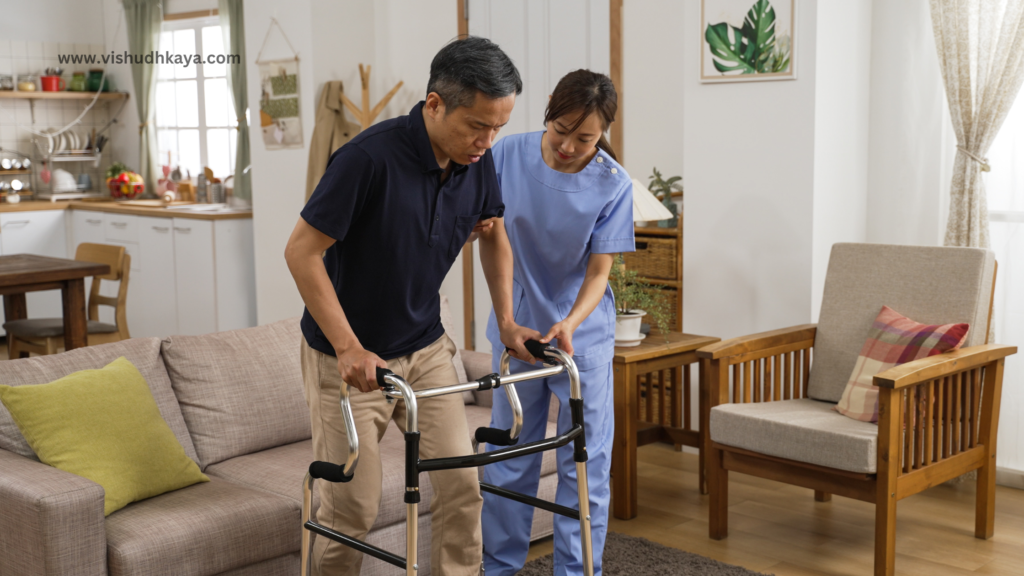
Stroke recovery can be challenging, affecting a person’s mobility, muscle function, and independence. Physiotherapy plays a vital role in rehabilitation by improving movement, reducing complications, and enhancing the overall quality of life. Through structured exercises and specialized techniques, stroke survivors can regain strength, coordination, and confidence in their daily activities.
1. Improves Mobility and Strength
- Stroke often leads to muscle weakness and restricted movement. Physiotherapy helps restore strength, flexibility, and coordination through structured exercises. Stroke often leads to muscle weakness and restricted movement, making everyday tasks difficult. Physiotherapy helps restore mobility by incorporating strength-building exercises, stretching routines, and movement training. Techniques such as resistance exercises and functional mobility drills help rebuild muscle power, improve joint flexibility, and support smoother movements, enabling individuals to regain their ability to walk and perform physical tasks more efficiently.
2. Reduces Muscle Stiffness and Spasticity
- Stretching routines, neuromuscular techniques, and manual therapy help relax tight muscles and prevent contractures. Many stroke survivors experience increased muscle stiffness and involuntary contractions, a condition known as spasticity. This tightness can make it difficult to move the affected limbs freely. Physiotherapists use passive and active stretching, neuromuscular techniques, and manual therapy to relax tight muscles and enhance flexibility. Regular therapy sessions help reduce pain, prevent contractures, and improve overall movement control.
3. Enhances Balance and Coordination
- Gait training for stroke patients helps them regain stability and prevents falls. Balance and coordination issues are common after a stroke, increasing the risk of falls and injuries. Physiotherapy includes balance training exercises, postural correction techniques, and weight-shifting activities to improve stability. Patients may also work on walking drills and coordination exercises to restore proper movement patterns. These interventions help stroke survivors regain confidence in their mobility and navigate their surroundings safely.
4. Helps Regain Independence in Daily Activities
- Stroke physiotherapy techniques focus on walking, dressing, eating, and bathing, reducing reliance on caregivers. Regaining independence is a key goal for stroke rehabilitation. Physiotherapy focuses on improving functional abilities such as walking, dressing, eating, and bathing. By strengthening muscles and improving motor skills, therapy helps individuals perform daily tasks with greater ease. Adaptive strategies and assistive devices, such as walkers or braces, may also be introduced to enhance self-sufficiency and improve quality of life.
5. Prevents Secondary Complications
- Physiotherapy helps prevent joint stiffness, bedsores, and poor circulation through guided exercises and positioning techniques. Limited movement after a stroke can lead to secondary health problems such as joint stiffness, pressure sores, and poor circulation. Physiotherapy plays a crucial role in preventing these complications through guided exercises, positioning techniques, and range-of-motion movements. By keeping the body active and promoting better circulation, therapy reduces the risk of long-term complications and supports overall recovery.
Physiotherapy Techniques Used in Post-Stroke Rehabilitation
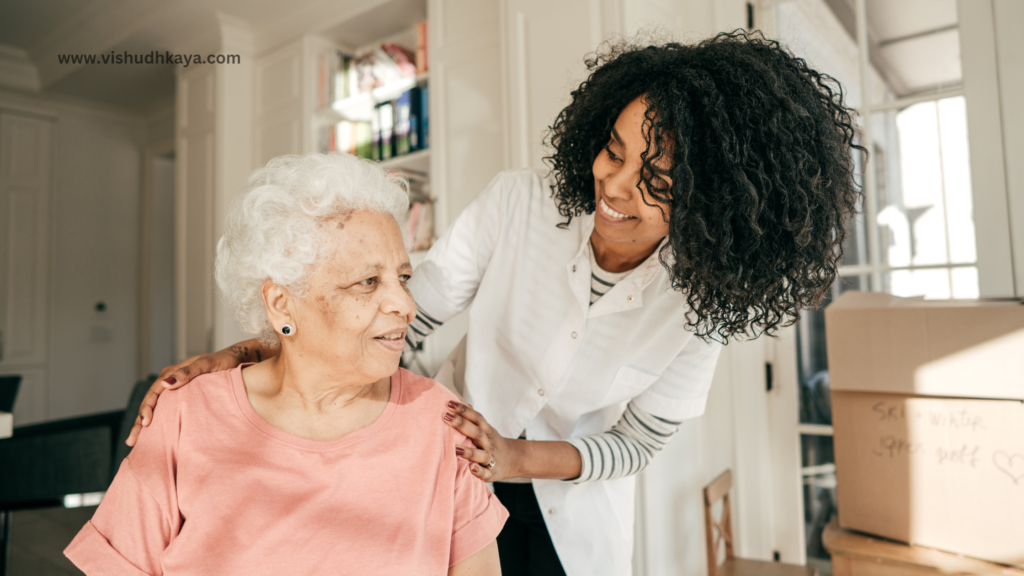
Stroke recovery involves a variety of physiotherapy methods designed to restore movement, enhance muscle function, and promote independence. These techniques focus on improving flexibility, coordination, strength, and brain adaptability, helping individuals regain their ability to perform daily activities.
1. Range of Motion (ROM) Exercises
- Helps prevent stiffness and maintain flexibility.To Prevent Stiffness and Improve Flexibility: Limited movement following a stroke can lead to joint stiffness and muscle tightness. ROM exercises, including passive, assisted, and active movements, help maintain flexibility and prevent muscle contractures. These exercises keep the joints mobile, allowing for smoother and pain-free movements while reducing the risk of long-term stiffness.
2. Gait Training
- Aims at relearning proper walking patterns and improving stride stability. Helping Patients Relearn Walking Patterns: Many stroke survivors struggle with walking due to muscle weakness, coordination issues, and poor balance. Gait training focuses on retraining proper walking techniques through structured exercises, assistive devices, and therapist-guided movements. By practising step sequences and weight-bearing activities, patients can regain a more natural and stable walking pattern.
3. Balance and Coordination Exercises
- Improves stability, preventing falls and enhancing postural control. To Prevent Falls and Improve Stability: Stroke often affects a person’s ability to maintain balance, making falls more likely. Physiotherapists use exercises such as stability drills, controlled weight shifts, and core strengthening movements to help patients regain better postural control. These techniques improve coordination, allowing individuals to move more confidently and safely.
4. Strength Training
- Uses resistance bands, weights, and bodyweight exercises to rebuild muscle power. Restoring Muscle Power for Daily Activities: Weak muscles can make everyday tasks challenging for stroke survivors. Strength training incorporates resistance exercises using weights, bands, or body weight to help rebuild muscle power in affected areas. Strengthening key muscle groups enhances endurance, improves mobility, and restores the ability to perform essential tasks like lifting, standing, and walking.
5. Neuroplasticity Exercises
- Encourages brain reorganization to regain lost functions. Encouraging Brain Reorganization to Regain Movement: The brain can reorganize and form new neural connections after a stroke, a process known as neuroplasticity. Physiotherapists use repetitive and task-oriented exercises to encourage the brain to rewire itself, helping patients recover lost motor skills. Techniques like mirror therapy and constraint-induced movement therapy (CIMT) stimulate brain activity, promoting gradual movement recovery.
6. Electrical Stimulation Therapy
- Stimulates weak muscles to restore movement and function. Stimulating Weak Muscles to Regain Function: This therapy involves applying mild electrical impulses to weakened or paralyzed muscles, helping activate them and restore function. Electrical stimulation enhances nerve-muscle communication, strengthens muscles, and prevents atrophy. When combined with active exercises, it accelerates the recovery of movement and muscle control.
7. Manual Therapy and Massage
- Reduces pain, improves circulation, and enhances flexibility. Reducing Pain and Improving Blood Circulation: Hands-on techniques such as soft tissue mobilization, joint manipulation, and therapeutic massage help alleviate muscle tension, relieve pain, and boost circulation. These therapies improve flexibility, ease muscle tightness, and enhance overall comfort, making movement more manageable for stroke survivors.
Conclusion
Physiotherapy is a fundamental part of stroke rehabilitation, helping survivors regain mobility, coordination, and independence. Through stroke recovery exercises and targeted physiotherapy techniques, individuals can improve their quality of life and reduce the risk of secondary complications. A well-structured rehabilitation plan started early, maximizes recovery potential and enables stroke survivors to regain confidence and functionality in their daily lives.
By focusing on exercises that enhance strength, flexibility, and balance, physiotherapy enables individuals to regain control over their movements and reduce the risk of secondary complications such as joint stiffness, muscle atrophy, and bedsores. Additionally, techniques that promote neuroplasticity help retrain the brain to adapt and regain lost functions, further accelerating recovery.
Beyond physical benefits, physiotherapy also plays a crucial role in boosting confidence and emotional well-being. The ability to move more independently and perform daily activities without excessive reliance on caregivers significantly enhances a person’s self-esteem and overall quality of life.
Every stroke survivor’s recovery journey is unique, and a tailored rehabilitation plan ensures that their specific needs are met. With consistency, patience, and expert guidance, physiotherapy empowers individuals to regain independence, restore functionality, and lead a more active and fulfilling life.
📞 Call us at: +91-76781 35151
📍 Visit us at: #8566, Sector 125, Sunny Enclave, Kharar, Mohali, Punjab 140301
🌐 Book online at: https://vishudhkaya.com
Don’t wait—empower yourself with Vishudh Kaya Pain Relief and Multispeciality Clinic!
FAQs About Stroke Recovery and Physiotherapy
How soon should physiotherapy start after a stroke?
Physiotherapy should begin as soon as the patient’s condition stabilizes, typically within 24–48 hours after a stroke. Early intervention is crucial for maximizing recovery and preventing complications like muscle stiffness and joint contractures.
What are the best exercises for stroke recovery?
The best exercises for stroke recovery include:
Range of Motion (ROM) Exercises: To prevent stiffness and improve flexibility.
Gait Training: To relearn walking patterns.
Balance and Coordination Exercises: To reduce the risk of falls.
Strength Training: To rebuild muscle power.
Neuroplasticity Exercises: To encourage brain reorganization and regain movement.
Can physiotherapy help with paralysis after a stroke?
Yes, physiotherapy can help with paralysis (hemiplegia) after a stroke. Techniques like electrical stimulation therapy, neuroplasticity exercises, and passive range of motion exercises can activate weakened muscles and improve mobility over time.
How does physiotherapy improve balance after a stroke?
Physiotherapy improves balance through targeted exercises such as:
Stability Drills: To strengthen core muscles.
Weight-Shifting Activities: To improve postural control.
Walking Drills: To retrain proper movement patterns.
These exercises help stroke survivors regain confidence and reduce the risk of falls.
What is neuroplasticity, and how does it help in stroke recovery?
Neuroplasticity is the brain’s ability to reorganize itself by forming new neural connections. In stroke recovery, physiotherapy uses repetitive, task-oriented exercises to stimulate neuroplasticity, helping the brain compensate for damaged areas and regain lost functions.
How long does stroke recovery take with physiotherapy?
Stroke recovery timelines vary depending on the severity of the stroke, the area of the brain affected, and the individual’s commitment to therapy. While some improvements may be seen within weeks, significant recovery can take 6 months to 2 years or longer. Consistent physiotherapy is key to achieving the best outcomes.
Can stroke survivors recover completely?
While some stroke survivors may achieve near-complete recovery, others may have lingering effects. The extent of recovery depends on factors like the severity of the stroke, timeliness of rehabilitation, and adherence to therapy. Physiotherapy helps maximize recovery and improve quality of life.
What is gait training, and why is it important for stroke patients?
Gait training is a physiotherapy technique that helps stroke patients relearn how to walk. It involves structured exercises, assistive devices, and therapist-guided movements to improve walking patterns, balance, and coordination. Gait training is essential for restoring mobility and independence.
How does physiotherapy help with muscle stiffness after a stroke?
Physiotherapy reduces muscle stiffness (spasticity) through:
Passive and Active Stretching: To improve flexibility.
Manual Therapy: To relieve tension and improve circulation.
Neuromuscular Techniques: To relax tight muscles.
Regular therapy sessions help prevent contractures and improve movement control.
Can stroke recovery be done at home?
Yes, stroke recovery can continue at home with guidance from a physiotherapist. Home exercises, such as stretching, strength training, and balance exercises, can complement clinic-based therapy. However, it’s important to follow a personalized plan to ensure safety and effectiveness.
